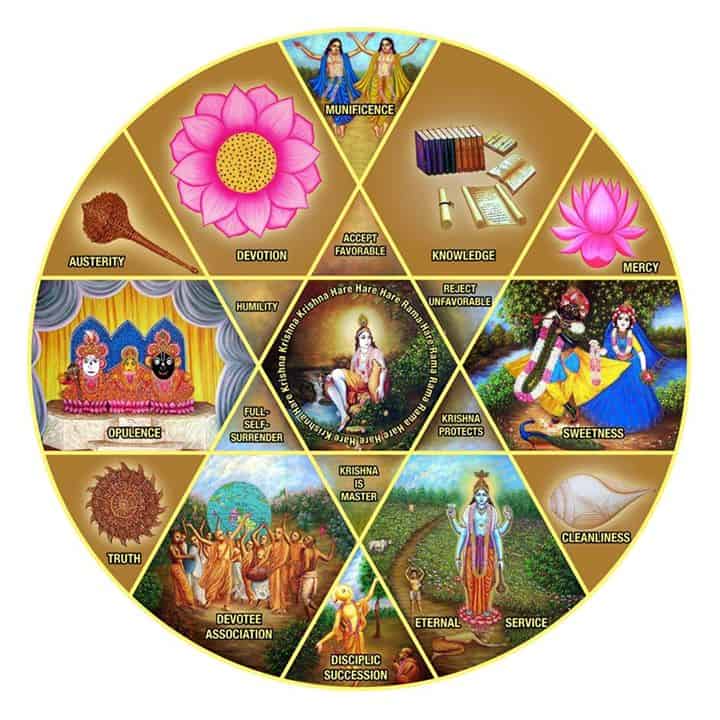ISKCON Congregational Development Ministry
GBC REPORT 2004
Take a Peek Around the World:
➢ Brisbane started the Spiritual Achievers Club, which incorporates the Siksa-Program of recognition and encouragement (in ISKCON Laws since 1993)
➢ Houston also started the Siksa Program
➢ 50 devotees took different levels
➢ Houston has now 8 groups (2 Bhakti-vrikshas & 6 Outreach) groups)
➢ San Jose, California, has now 4 Bhakti-vriksha groups and one Krsna Children Club.
➢ Growth reported in Africa & South America.
In Kuala Lumpur, Malaysia, three systems coexist and complement each other:
➢ Bhakti-vriksha, Counselor Groups & Nama-hatta
➢ Grihastha Vision Team starts training in North America
➢ Grihastha Vision Team presents new course: “Strengthening the Bonds that Free Us”
➢ Grihastha Vision Team also trains Mentor Couples
➢ The Spiritual Strategic Planning Team, USA, focuses on many congregation-related areas such as…
➢ Temple Hospitality
➢ Sunday Schools
➢ Youth Programs
➢ Counseling
➢ Nama-hatta
➢ Sunday Feast
➢ Retreats
➢ Introductory Coursework
➢ Grihastha Initiatives
➢ “Weekend Warriors” and more
“Mathuradesa” most developed Bhakti-vriksha Program:
➢ 1 Yatra Leader
➢ 11 Maha-cakrapatis
➢ 14 Cakrapatis
➢ 30 Upacakrapatis
➢ 97 Bhakti-vrikshas
➢ 24 Nama-hattas
➢ 2005 goal: to double the Bhakti-vrikshas
Pune, India, reported:
➢ 14 Counselor Groups
➢ 45 Bhakti-vrikshas
➢ 1440 educational programs
China:
➢ “Free to Preach” translated and printed in Chinese.
➢ Every devotee in China gets a free copy.
Russia:
➢ Russia: although Moscow Temple closed, the congregation maintains and expands.
Siberia:
➢ In parts of Siberia, far from temples, major towns have congregational yatras, with 10-20 Bhakti-vriksha groups each.
Australasia:
➢ Australasia: New approaches emerging in cultivation of contacts through email-newsletters, web sites and mobile phones.
Congregation building should come before and along with Temple building:
So, if you go on simply opening centers, if there is no knowledge then it will again become a closed church someday. So, don’t do that. Before opening a center, you must have perfect worshiper, perfect devotees. Not perfect, at least those who are willing to become. Then open.
Lecture, 23 July, 1975
Srila Prabhupada’s 108 Anniversary:
Goal:
➢ to inspire and train as many temples and yatras as possible to strategically plan for their systematic congregational growth.
Strategic Planning training done in:
➢ Melbourne-Australia, New Govardhana-Australia, New Santipur-Poland, Penang-Malaysia, Kuala Lumpur-Malaysia, Croatia, Russia, India-RGB/ICC, Mayapur-MAC, Damodar Desa-Middle East, Balaram Desa-Middle East, Atlanta-USA, Lima-Peru, Guayaquil-Ecuador, Santiago-Chile, Cochabamba-Bolivia, Continental Festival at Nova Gokula-Brazil Farm, Colombia, Durban-South Africa, Johannesburg-South Africa, Bangalore-India, Mathuradesa-Middle East, Bhaktivedanta Manor-UK, Soho Street, London-UK, Copenhagen-Denmark, Malmoe-Sweden, India (West Bengal, Assam & Orissa Nama-hatta preachers, Chennai, Tirupati, and Hosur) and a number of other places at different festivals.
ANTARDVIPA, Sri Jagannatha Mandir, Kuala Lumpur:
Reporting & Scores:
➢ Other organizations are much more careful in keeping track.
➢ The Jehovah Witnesses, for instance, can tell you the total hours of preaching for every country and how many hours it takes to make a convert in different places.
Home Programs 2005: 47,468
➢ 5030 Sraddha-kutirs reported.
➢ 3236 people attended educational programs monthly
VISION:
The bridge between present and future.
➢ There are ISKCON congregations in every town and village of the world, firmly connected with existing temples or, where there are no temples, functioning self-sufficiently under GBC guidance.
➢ All congregational devotees are active in groups, they are cared for, they receive ongoing education and they are empowered to preach and become spiritual reference points for others.
➢ Temples provide a welcoming and conducive atmosphere; exemplary temple residents.
➢ Contacts are systematically nurtured and cultivated; congregational preaching follows as the natural sequence to book distribution, festivals, etc.



